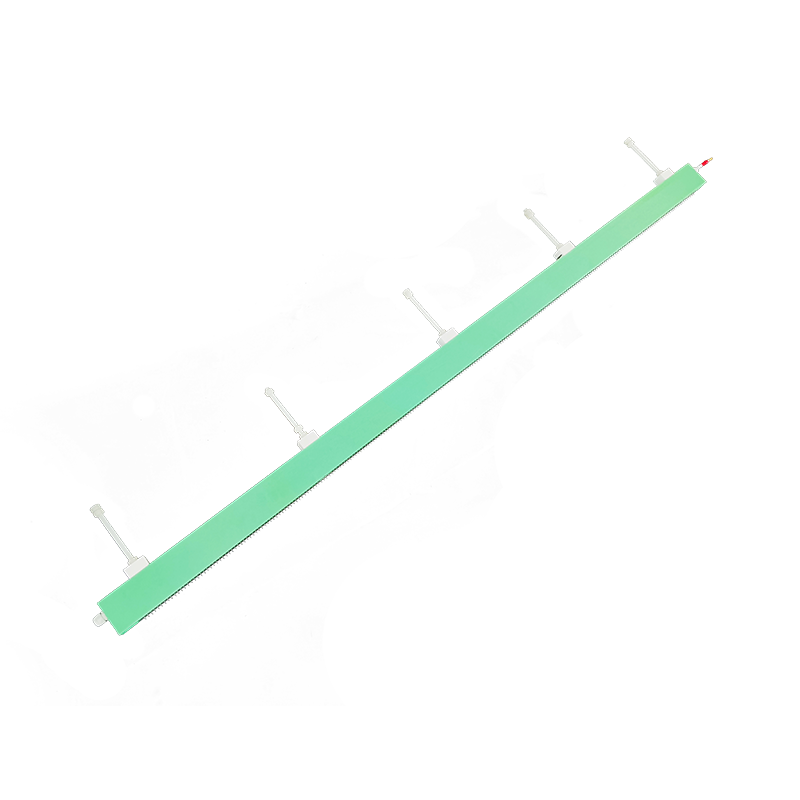Technical Breakthroughs and Applications of Gas Discharge Control in Excimer Laser High-Voltage Power Supplies
Excimer lasers (e.g., ArF, KrF) serve as core deep-ultraviolet light sources, whose performance critically depends on the precise control of gas discharge by high-voltage power supplies. The stability, efficiency, and longevity of gas discharge directly determine laser output quality, with pulse modulation technology in high-voltage power supplies being the key to achieving this goal.
1. Scientific Significance of Gas Discharge Control
Excimer laser excitation requires gas ionization and population inversion within nanoseconds. Traditional high-voltage power supplies using thyratron switches exhibit pulse rise times (voltage front edges) exceeding 100 ns, leading to three major issues:
1. Local arcing and uneven energy deposition: Slow voltage rise causes misalignment between pre-ionization and main discharge, increasing impedance fluctuations and inducing electrode erosion and gas degradation;
2. Low energy conversion efficiency: Only ~30% of electrical energy converts to laser radiation, with the rest wasted as heat;
3. Shortened gas lifetime: Halogen gas rapidly depletes due to non-uniform discharge, raising operational costs.
Compressing the pulse front to 50–100 ns significantly improves discharge uniformity: Pre-ionization electron clouds synchronize precisely with high-voltage pulses, suppressing discharge channel contraction. This boosts energy conversion efficiency beyond 59% and extends gas lifetime by 30%.
2. Core Technical Pathways for Discharge Control
1. All-Solid-State Magnetic Pulse Compression (MPC):
Replacing thyratrons with IGBT semiconductor switches and multi-stage magnetic compression circuits:
• Stage 1: IGBT generates μs-level high-voltage pulses (10–20 kV);
• Subsequent stages: Magnetic switches compress pulse width below 0.1 μs and reduce rise time to under 90 ns.
Advantages: Switch longevity reaches 10⁹ cycles, supports kHz-level repetition rates, and electromagnetic compatibility (EMC) is enhanced via layered PCB layouts and magnetic shielding.
2. Timing Synchronization and Pre-Ionization Optimization:
• Pre-ionization triggering: Corona discharge initiated 5–50 ns before the main discharge generates uniform electron clouds for synchronized discharge;
• Resonant charging network: LC circuits precisely regulate charging currents to minimize voltage overshoot, while cascaded Marx circuits improve pulse amplitude stability.
3. Closed-Loop Feedback Control:
Pulse front jitter propagates to laser spectral linewidth (e.g., E95 bandwidth). Real-time discharge current monitoring combined with FPGA-based voltage slope adjustment stabilizes linewidth within ±0.1 pm, meeting lithography precision requirements.
3. Technical Challenges and Breakthrough Directions
1. Thermal management: High repetition rates concentrate switching losses, necessitating microchannel liquid cooling and SiC wide-bandgap devices to reduce thermal resistance;
2. EMI suppression: Nanosecond switching generates high-frequency noise, requiring optimized grounding and magnetic core materials;
3. Dynamic gas response: Gas aging shifts discharge characteristics, demanding adaptive control algorithms.
4. Application Value and Future Trends
1. Lithography: 6 kHz ArF sources enable 7 nm processes, with overlay accuracy ensured by energy stability (±0.8%) and narrow linewidth (<0.1 pm);
2. Medical precision: Energy fluctuations <1% in corneal surgery prevent micro-roughness on ablated surfaces;
3. Advanced material processing: Silicon carbide (SiC) surface roughness <4.11 nm with 50% reduced heat-affected zones.
Future trends focus on:
• Intelligent integrated modules: FPGA real-time slope adaptation to dynamic gas changes;
• Ultrafast magnetic materials: Nanocrystalline cores compressing pulses to 20 ns for next-generation EUV lithography.
Conclusion
Gas discharge control in excimer laser high-voltage power supplies is pivotal for balancing efficiency, precision, and reliability. Innovations in solid-state switches, magnetic compression, and timing synchronization have overcome limitations in discharge uniformity and energy conversion, propelling advancements in high-end manufacturing and medical equipment. As device materials and intelligent algorithms evolve, gas discharge control will continue advancing toward ultrafast response, ultra-stable output, and adaptive intelligence.




















